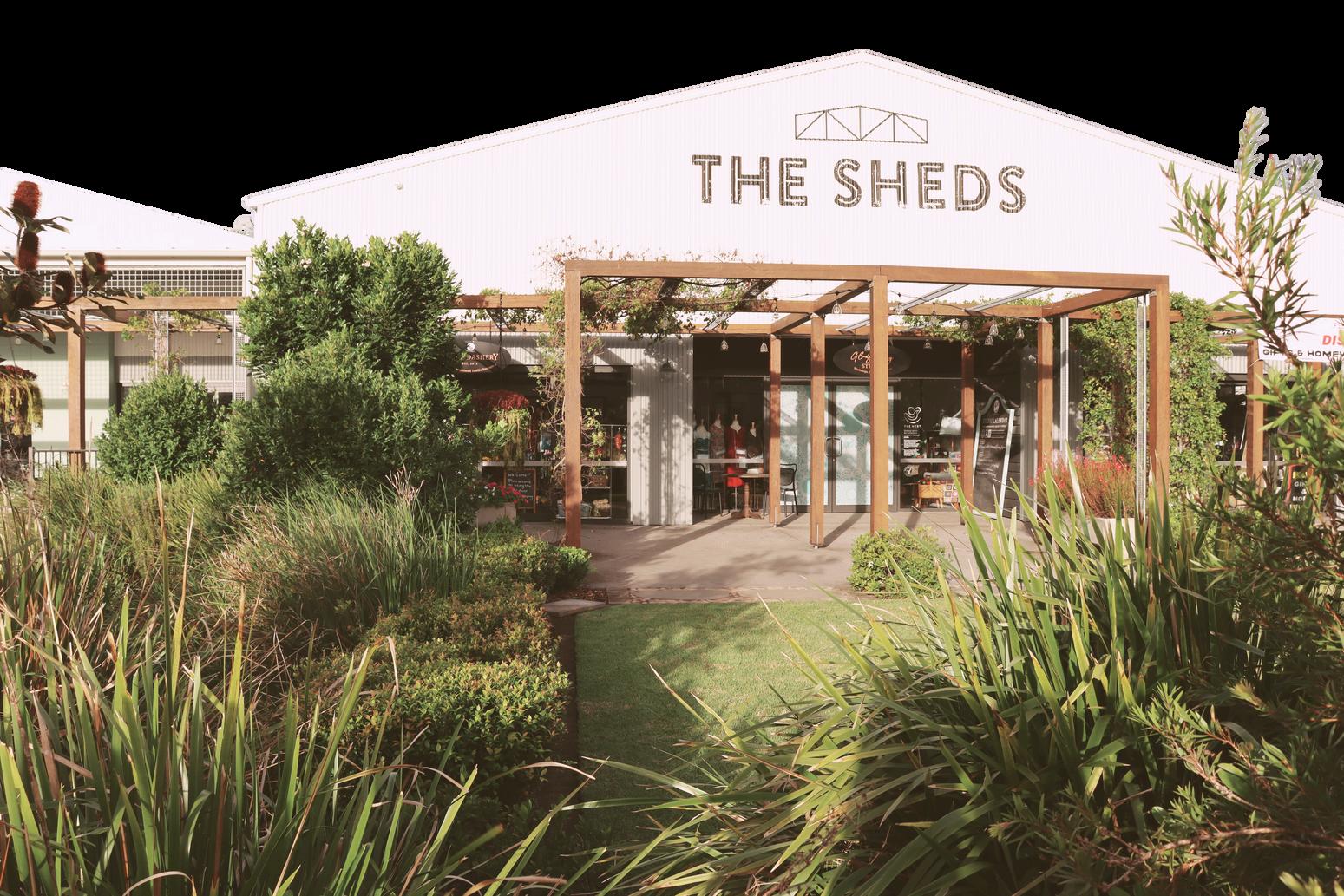














W E L C O M E
When Rebecca and I first started The Nest, I was greatly inspired by the work of writer, activist and crafter Betsy Greer, who coined the term Craftivism. I recently looked back at the Craftivism Manifesto and it’s heartening to see how true we’ve stayed to our initial vision
Craftivism is about raising consciousness, creating a better world stitch by stitch, and things made by hand by a person. It is also about sharing ideas with others in a way that is welcoming, not dividing, and celebrating traditional skills in new ways. As well as remembering and respecting the makers that came before us, adding to the dialogue and leaving something for the next generation of craftivists.
Through our little Haberdashery, we’ve raised awareness about textile waste and how the community can take action Our resource recovery program also preserves
sewing memorabilia in our Heritage Collection and enables us to run free programs like the Exchange Project to pass on skills.
The Nest Haberdashery is like a Craftivist dream-come-true
So to celebrate all the small acts of craftyactivism, please enjoy this month’s issue that showcases the diversity of our volunteers’ aprons and uncovers a miniature replica of Grandma’s house We even dive into Gen Z taking on fast fashion and reveal how one little Chanelinspired jacket inspired a bit of in-house collaborative couture
Remember, my craftivism can be different to your craftivism, and that’s okay.



In last month’s issue we told the story of how co-founders Roz Holt and Rebecca Cason finally achieved their goal. They secured funding to cover 12 months of rent and overheads, allowing them to move into a place they could call home and create a space for women to connect.
If this was a movie, picture the scene. Roz and Rebecca are on a wave of excitement as they’ve signed a 12 month lease for a heritage-listed home, 720 South Pine Rd Everton Park. They get the keys to the property and are opening the door to start building their community But each room is empty The kitchen has no fridge, not even a kettle There was nothing, except some tables and 4 sewing machines from Roz’s business, The Craft Nest Project.
But just like in the movies, it was then that Roz got a call from Michelle, one of The Nest’s founding members.
As luck would have it, Michelle’s boss was downsizing and had a house filled with heritage furniture They were moving into a modern place, so the furniture no longer suited them. Would The Nest like it?
The furniture suited the feel of the space but it was the handmade decorations The Nest volunteers made that transformed the house into a home.
To fundraise, in addition to running workshops upstairs at Everton Park, Roz ran them in other locations like Woodford Folk Festival. It soon became clear that this wasn’t sustainable and they needed to maximise the revenue potential of their own space
Plans were developed to concrete under the house so that workshops could be run in a larger, open space.
Roz recalls, “We managed to publish a website and through our Facebook page we did a call out asking for help from the local community. Over twenty people turned up! I’d never met them before but half stayed with us for years”.
Local tradie Reoz Cy Taurua of Tommy T Concreting came to the rescue He felt a personal connection with the initiative because he’d been brought up by a single mother who, from lack of family support and community, had become drug dependent He managed to enlist support from suppliers and reduced the cost of the project from $15000 down to just $6000
By the end of 2016, Rebecca had left the organisation to raise her family and Roz was managing a handyman business, operating her Art practice and had a parttime job at Spotlight Roz’s Mum, Gladys Foley (who was in her early eighties) stepped in to shoulder the responsibility of The Nest’s operations. It was truly a grassroots effort, 100% volunteer-run, with no paid staff
But it was Roz’s experience working at Spotlight that gave her an idea. She realised that textile resources people donated to The Nest were mostly unused and people were donating more than The Nest could use As a self-funded organisation, selling surplus materials provided some financial stability and so they started selling haberdashery from the front verandah two days a week
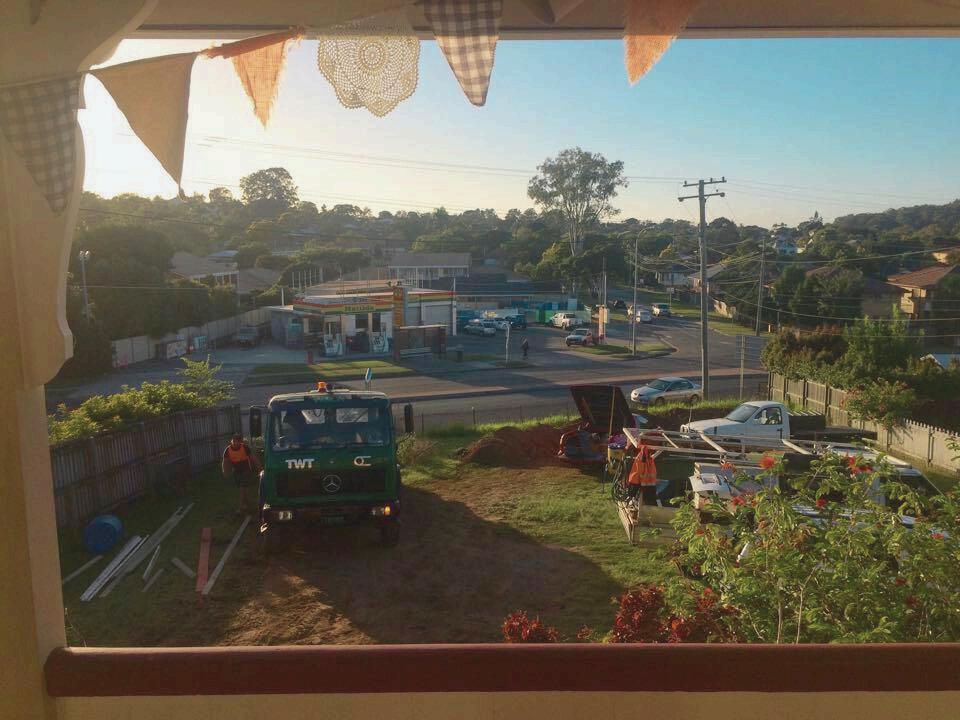

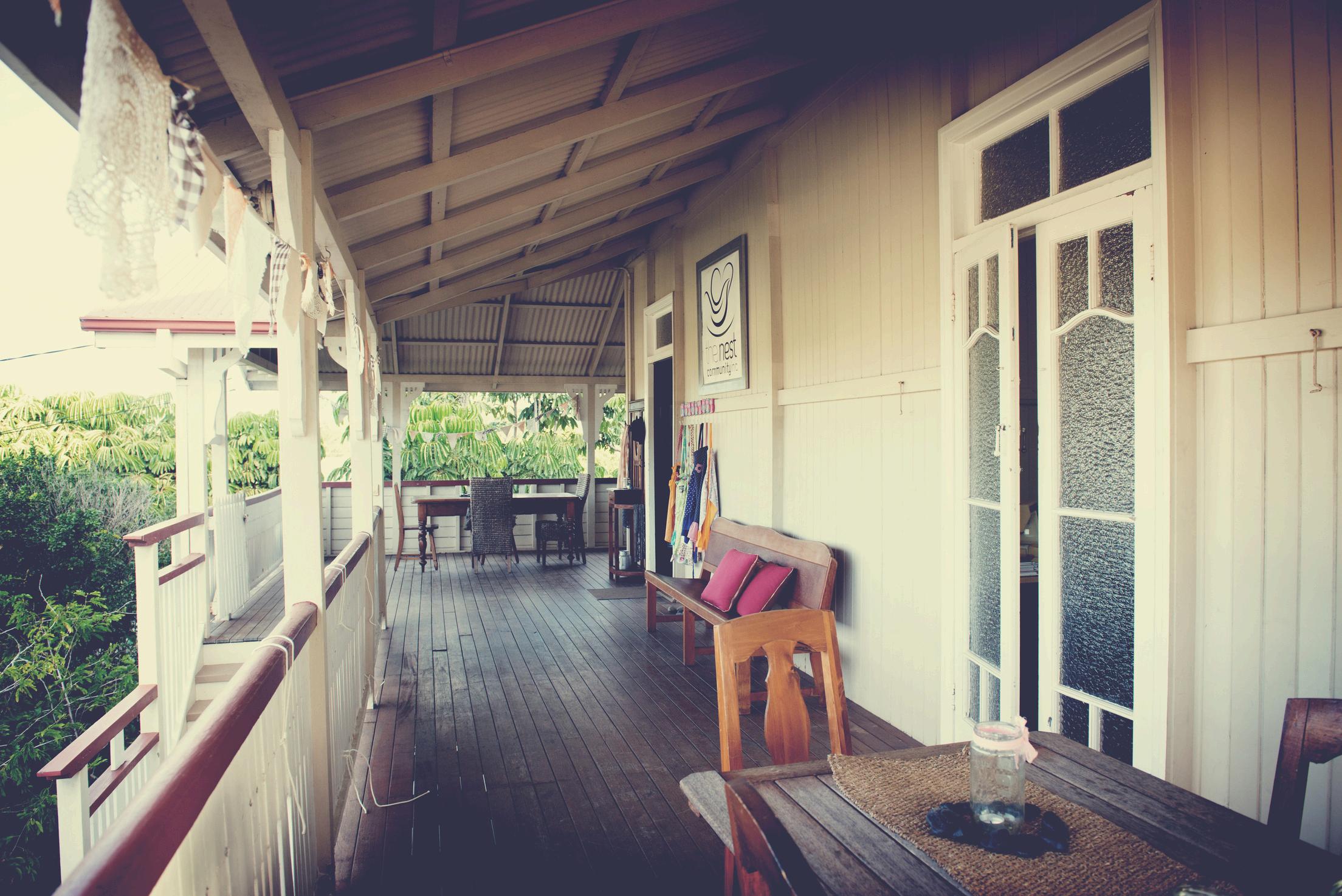

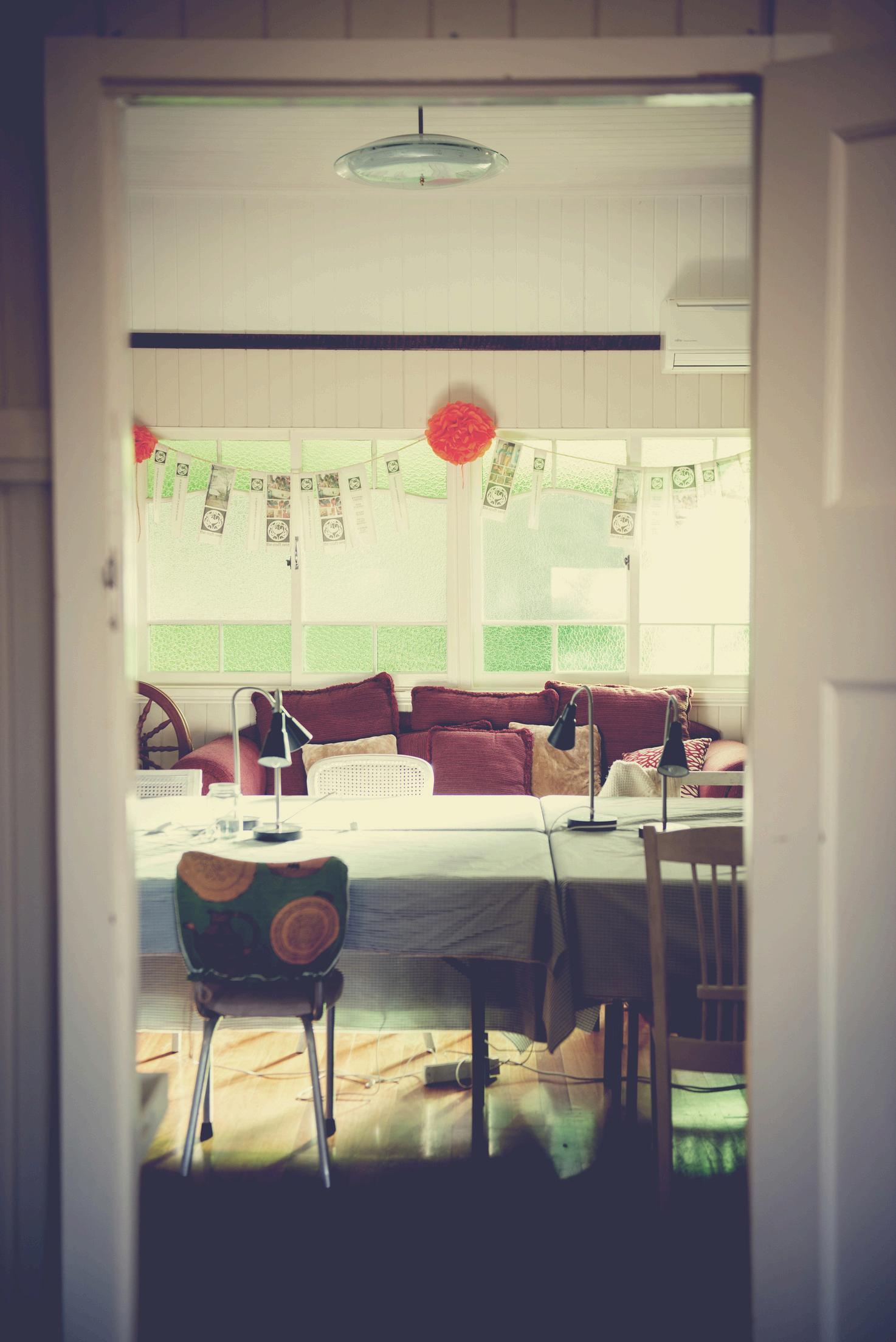
However it wasn’t enough to secure the organisation's future and over the next few years, Roz continued to apply for funding But as a small independent organisation, opportunities were limited and she was often told ‘your idea is too out-of-the-box’.
“It was so frustrating. There was a funding pool for community centres, but that was based on giving out welfare. We didn’t want to do that because we believed there were better ways to support and empower people. We also tried to access the same funding pool as Men’s Sheds - thinking that the concepts were similar, but we were told - women don’t need a space to connect. They told us, "you've got libraries, cafés and your kitchen tables”.
For four years The Nest continued to evolve organically, subsisting on fundraising initiatives and volunteers' shared passion to create a space where women could connect through craft.
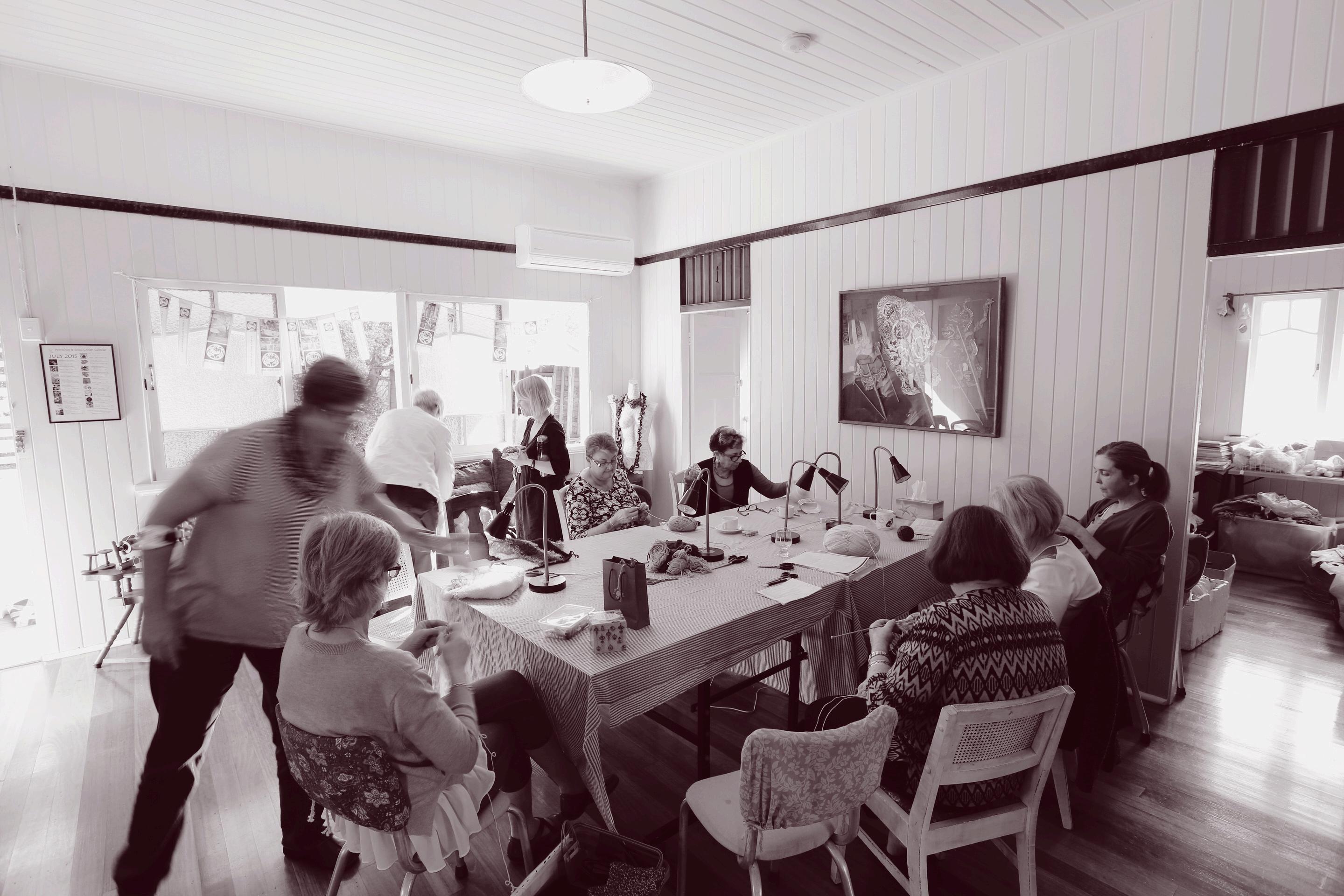

The original
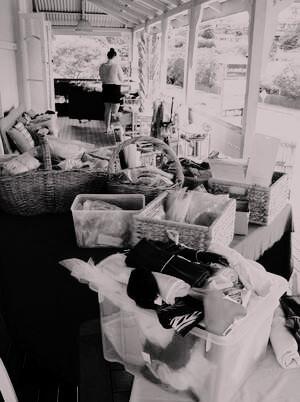
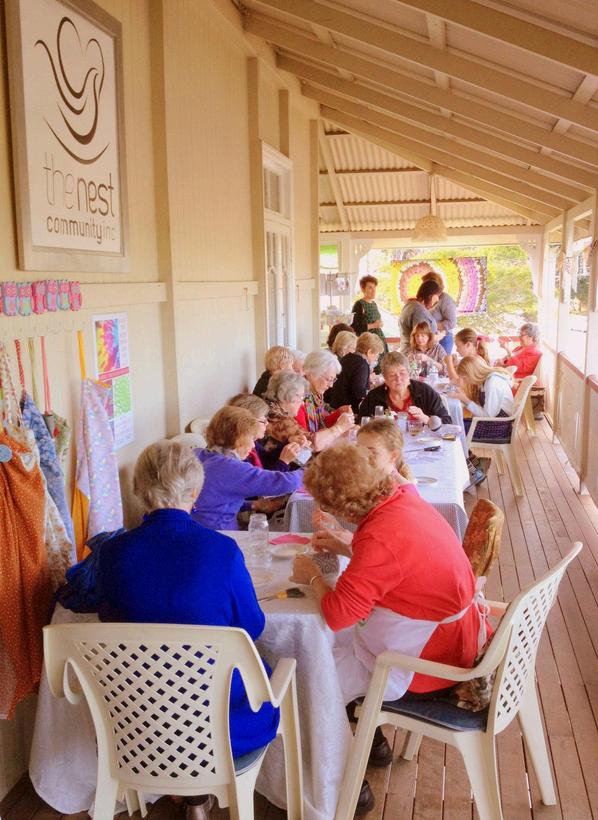
Without being able to secure funding, operating a social enterprise was the only way we could move foward with our initiative. Our community home became a busy hive as we learnt to make money around the things we loved.
Roz Holt, The Nest CEO & Co-Founder


The organisation was on borrowed time Public demand for The Nest’s services was beyond the capacity of the residential house they’d leased. Without secure funding, the organisation was in jeopardy and by 2019 it was clear that full-time strategic leadership was needed.
Local MP Tim Mander introduced The Nest to Wesley Mission and the organisation was successful in getting a $40,000 grant to cover wages for a year
With financial support behind her, Roz adopted a new revenue approach and wanted to create a social enterprise based on the things The Nest volunteers loved.
The timing was perfect because it saved The Nest in its current situation but as luck would have it, prepared the organisation for the challenges of the COVID-19 pandemic that was just around the corner.



Our first ever Vintage Stall was held in late September and generated quite a buzz of nostalgia. We were unveiling our hidden stash of retro treasures so expectations for this event were high
Opening day didn’t disappoint with an excited queue waiting for us to start. Two customers left at 7am and travelled 400 km just to shop. That’s dedication!
For months we had been putting aside relevant items, but it wasn’t until we set up the stall that we could see what a magnificent collection it was
It was a fascinating display of stylish, interesting patterns, dressmaking and craft magazines and guides For textile enthusiasts there were miniature mountains of doilies, fine linens as well as classic tea towels and tablecloths
The fabric selection ranged from vintage to retro, with the most precious buttons, notions and trims Stunning vintage sewing machines were snapped up, along with a range of other sewing, weaving and knitting equipment
There were some show-stopping pieces available. An unbelievably intricate, framed, Victorian drawn thread embroidery went to a good home While a collection of Dorcas thimbles was redistributed to many fans
It's humbling to think of the journey many of these precious items have taken. How long they’ve been cared for and then passed on
To think, our Heritage Collection started as one small display cabinet. Now it’s overflowing to the point we can’t hold it all.
We are truly thankful to be able to offer a place where these items can come and be shared





Aprons are a strong tradition at The Nest that dates back to when our founder, Roz ran The Craft Nest Project in 2012.
Historically, when new girls joined the workshops, their first project was making an apron. It was a simple project to complete and became a uniform It identified her as part of a supportive group that shared skills freely
In 2019 when The Nest opened its social enterprise, The Nest Haberdashery in Everton Park, aprons became a part of the volunteer uniform A practical garment with a handy pocket for scissors, made of durable denim sourced from old jeans.
Today, when new volunteers join the team, they have the option of making their own apron or receiving one pre-made. No matter which option they choose, the signature aprons have become a blank canvas for the women to express their craft skills and personality
We recently ran a Volunteer Apron Competition to celebrate this creativity, and received over 20 entries
We invited Jenny Fisher, Director of Wattle Run Developments to pick a winne as well as nine semi-finalists for the People’s Choice Award


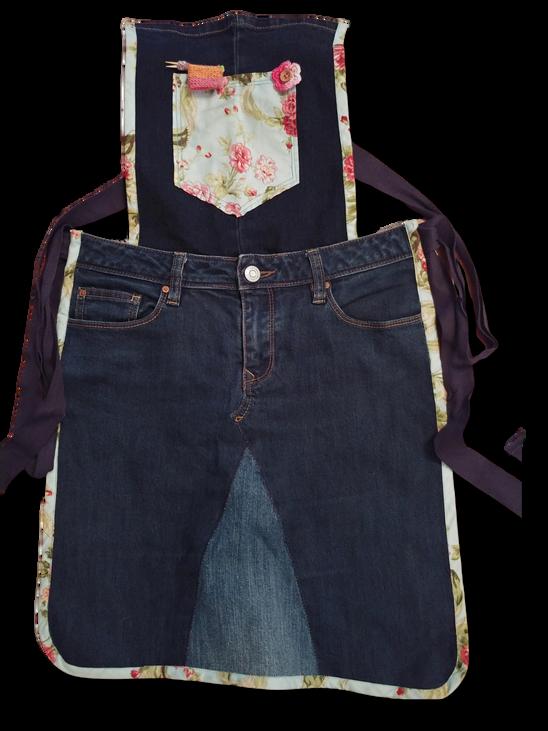
Jenny and her husband Doug our organisation incredible su we moved into The Sheds, their development in Brendale They resonated with our community values, sustainability ethos and generously supported us throughout the fitout of The Nest Haberdashery
Jenny loved the exercise, assessing each apron on the complexity and creativity of the design as well as sewing skill.
Congratulations to our competition winner Sue Biggs, who receives a $100 resource voucher for The Nest Haberdashery.
The People’s Choice Award was hotly contested on our social media channels but Maureen Mothershaw emerge winner, who receives a $50 resou voucher for The Nest Haberdashe

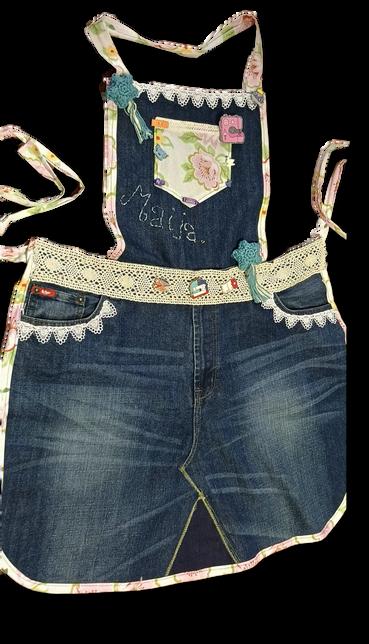




T H R E A
I N G T O G E T H E R

When the 2020 COVID pandemic struck and lockdowns were in place, people turned to craft as a way to pass their time, release their anxiety and be in-themoment during great uncertainty
Craft skills like knitting seemed to be the old-world panacea that many craved and as a result demand for The Nest Community’s preloved craft supplies and low-cost workshops escalated
It was a time where many asked ‘what more can we do’ and as an organisation, we decided to take inspiration from The Craft Nest Project - the genesis of our organisation.
We were inspired to develop a free mentoring program based on intergenerational connection, to support vulnerable girls Our aim was for girls to spend time in a welcoming space, connect with older women and learn hand making skills to improve their self confidence and resilience
With a highly experienced, craft-loving team of volunteers and a local high school to partner with, the concept for a free mentoring program evolved.
The Nest successfully secured financial support from the Vincent Fairfax Family Foundation and the Exchange Project was launched in 2021 with Mt Maria College.
Once a week during term, 10 mentors hosted 6 girls in our Everton Park ‘home’ to deliver an experience that was akin to spending an afternoon at Grandma’s house
Driven by the success of the pilot program we had the opportunity to partner with a second high school.
“Students who attend have flourished under the guidance of experienced mentors, honing their creative abilities and discovering new passions along the way” says Joanne Smith, Mitchelton State High School teacher
When the organisation relocated to The Sheds, a large industrial space in Brendale, we were adamant that we needed to recreate a nurturing space Not only to continue the program, but also house our Heritage Collection of sewing memorabilia.
Fortunately, we were able to access a tenancy that adjoined the Haberdashery and the Gladys Mary Studio was officially opened in December 2023.
Through Moreton Bay City Council, we received a Community Activities Grant of $10,000 This combined with a $2000 donation from our long-term patron Tim Mander MP, the program was fully funded until October 2024.

Students who attend have flourished under the guidance of experienced mentors, honing their creative abilities and discovering new passions along the way.
Joanne Smith, Mitchelton State High School teacher

The Exchange Project restarted in Term 4, 2023 with our long term school partner, Mitchelton State High School with a second school, Bray Park State High School, joining us in Term 2 2024.
What we’ve observed is that the program outcomes have been most pronounced with the Mitchelton students who’ve been participating for several terms. There’s a lot of camaraderie among the group and they attend enthusiastically, always making the most of their time at The Nest
We had the pleasure of welcoming back a previous student who had participated 2 years ago but had been unable to attend because she had changed schools When we first knew her, she was particularly vulnerable and lacking in trust. It's wonderful to see her again, quite relaxed, smiling and laughing with the others The Nest has provided her with a safe space to overcome critical challenges in her early years.
During the first half of the year participants have completed a whole range of individual projects. To slowly introduce the values of community giving, some have started work on projects that they can donate to our Christmas craft stall to help raise funds for The Nest Community
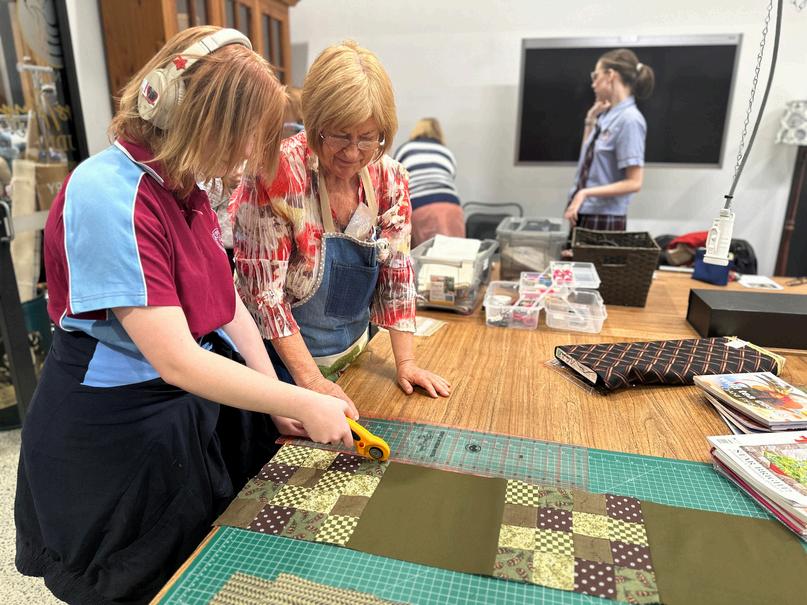
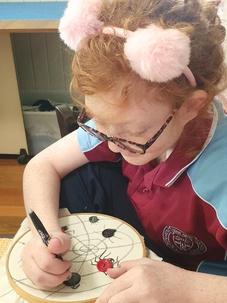



Over the last 4 years, 40 different volunteers from within our community have shared their skills with over 200 girls. Teachers and mentors regularly observe how students come out of their shell, form and strengthen relationships, explore a range of new skills, and most importantly, demonstrate increased confidence back in the school environment.
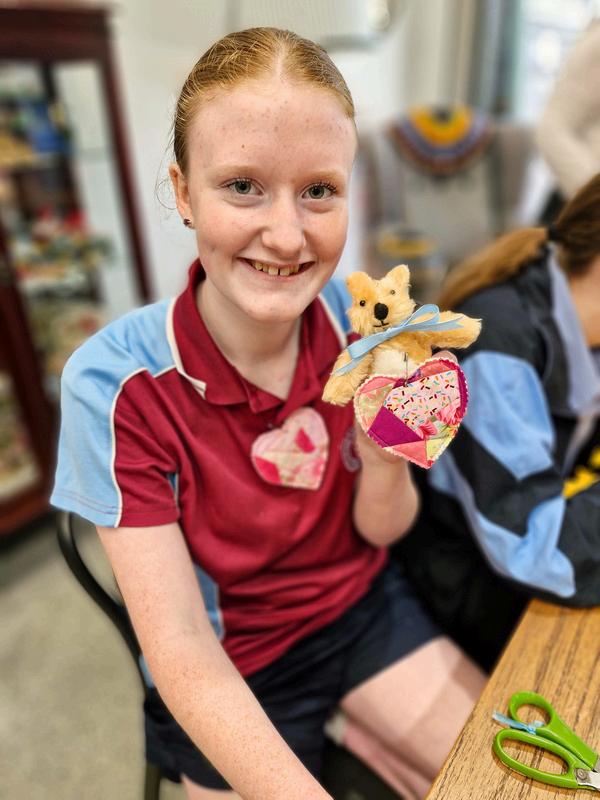

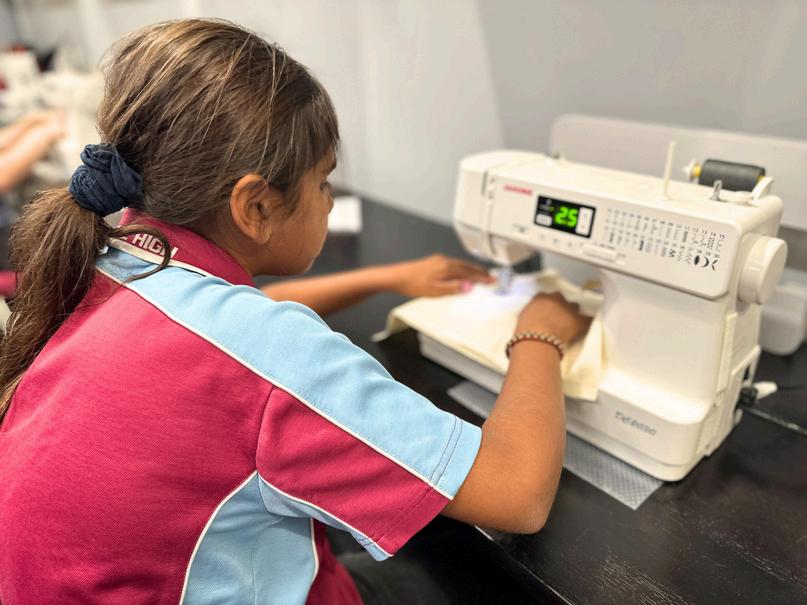


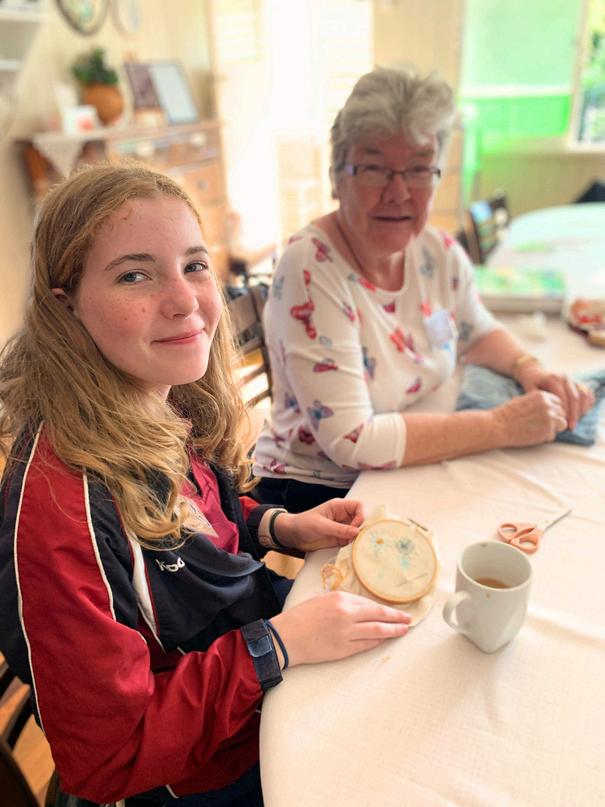
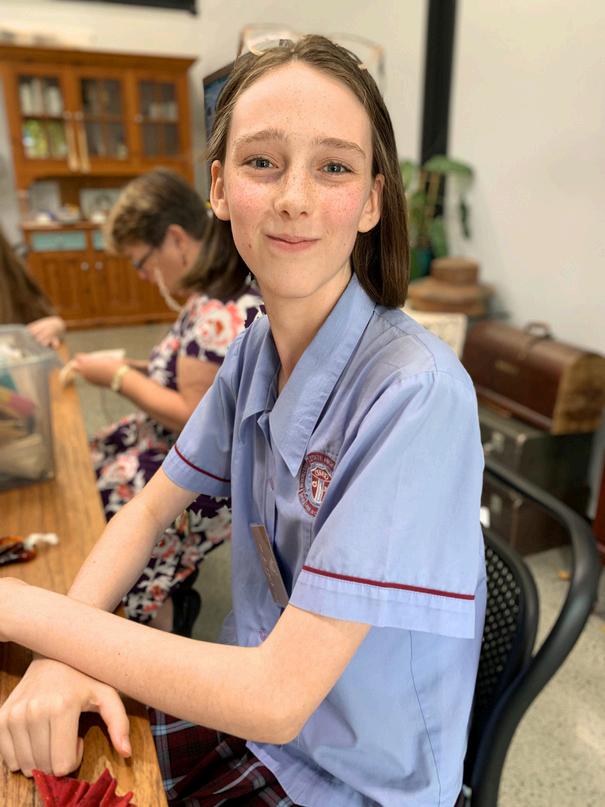






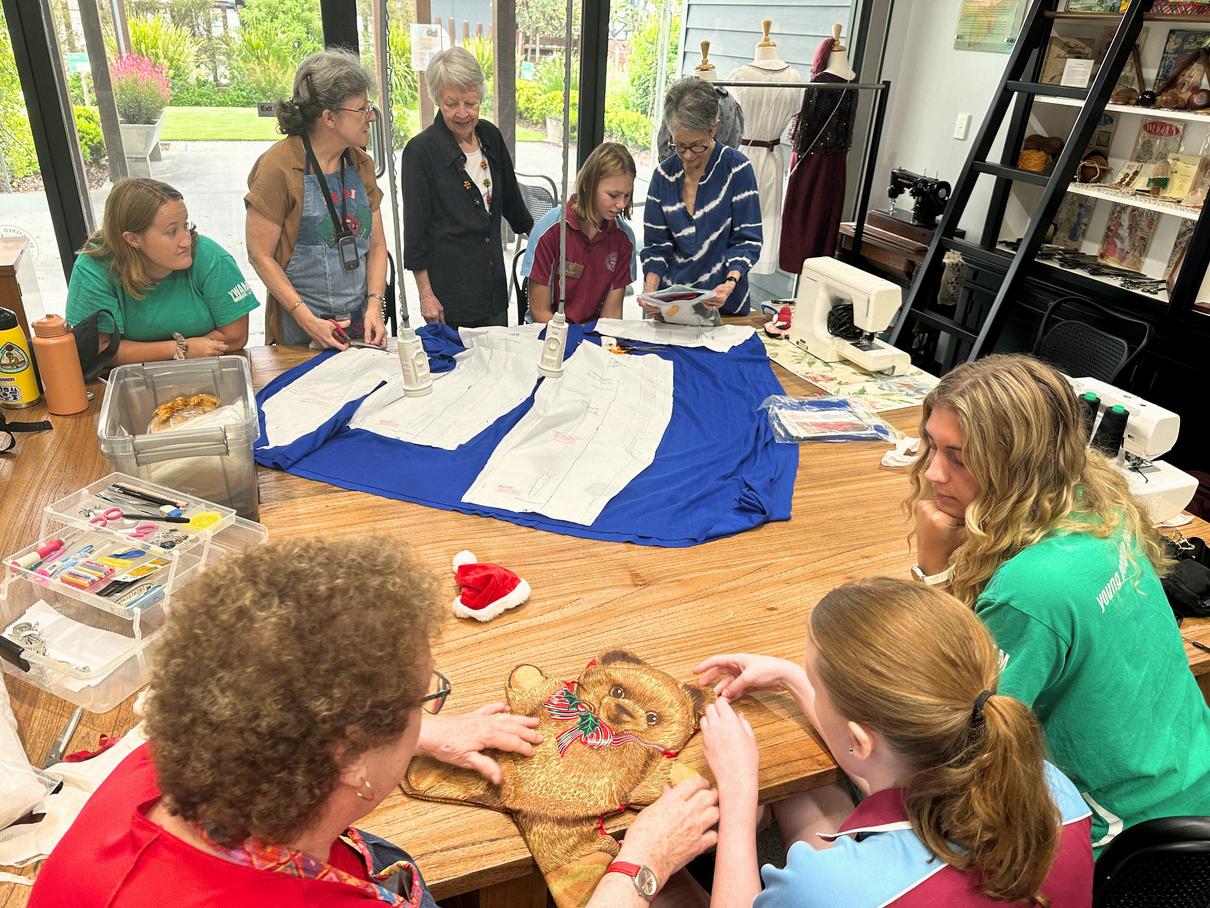

In September 2024, women from the Zonta Club of Brisbane North approached us to sponsor the Exchange Project for two school terms.
The Zonta Club is a not-for-profit organisation committed to empowering women and girls through service and advocacy. As part of Zonta International, they work locally and globally to promote gender equality and improve the lives of women and girls. Zonta’s initiatives include education, health, economic empowerment, and ending gender-based violence.

We look forward to engaging more community partners to ensure this successful program continues into the future.
STORY OF COLLABORATIVE COUTURE
Nest volunteers, Sharon and Glenys look so effortless in their gorgeous Chanelinspired jackets But the story behind how they were made is one of determination, experimentation and even collaborative couture
It was the Inside Secrets of a Chanel Jacket article in 2005 Threads magazine #121 that started Sharon’s addiction.
“I bought Vogue pattern V7975 and made three jackets. Karl Lagerfeld [Creative Director of Chanel] has always used beautiful-looking fabrics, but I was particularly inspired by those in his 2011 Spring / Summer collection. They were black, white and shades of grey with delicious flecks of silver scattered throughout. I wanted one but couldn't afford it, so thought ‘why not make one?’
When she couldn’t source the fabric she had dreamed of, Sharon went deeper into the obsession and made her own.
“I took a basic weaving class and purchased a small loom. Being an opshopper and supporting resource recovery, I combed thrift stores for black, white, grey and silver yarns.”
She was able to source an amazing variety of yarns - alpaca, wool, silk, cotton, as well as glittery ribbon and artificial yarns.
The jacket she made from self-woven fabric won 3rd prize in the 2019 Ekka [the annual agricultural show of Queensland] weaving category.
More recently, while chatting with fellow volunteer Glenys, Sharon found they had a mutual love of Chanel
Glenys asked Sharon to help fit her muslin as she was embarking on her first jacket A month later, they both wore their jackets on their shift in the Haberdashery
“Glenys complimented my black & white jacket, but you should see her beautiful hand stitching inside her green jacketperfection! It's fun exchanging ideas and interests - and time really flies”.
Even though Sharon took on the ultimate challenge to make a Chanel jacket, she is humble about her skills and simply describes herself as a ‘hobby home sewer’ who taught herself through online videos and her sewing group at The Australian Sewing Guild
What Sharon has achieved may seem daunting, but as her sewing idol Joan says:
"If you’re a good sewer, all you need are straight and zig zag stitches"



Dress shabbily and they remember the dress. Dress impeccably and they remember the woman - Coco Chanel
Detail of the fabric Sharon wove from thrifted yarns, and made into a Chanel-inspired jacket



by Barbara Landels
Childhood experiences often inform the direction we take as adults For Nest volunteer Lynne, it was spending several summers in her Grandma’s house in the Blue Mountains.
It was like the original tiny house – it used to be a garage that was converted when she lived in it. I have great memories of visiting her and loving the house, she made everything –clothes, furniture, curtains –I just thought what she did was amazing
into other things – I can do knitting, crochet, embroidery, all kinds - but quilting is the big one that I’ve done the most”.
Lynne has been sharing her making skills at The Nest Community since 2017 During those early days, before our social enterprise had evolved, she ran workshops like slow stitching and Mexican embroidery Workshops were one of our fundraising initiatives and we’re incredibly grateful to all the volunteers, like Lynne, who fundraised in this way.
Grandma’s handmade home provided a comforting constant for Lynne, during a time of upheaval when her parents divorced It inspired Lynne’s love of making who is a multidisciplinary, selftaught crafter. There’s not much that Lynne doesn’t make
“My main craft has always been quilting I’ve done that for 30 years now and I used to enter shows, but don’t anymore. It’s my go to ‘craft thing’ – I like to branch out
When The Nest relocated to Brendale, Lynne continued to do a regular shift in The Nest Haberdashery She also took on the role of curating the Nest’s Heritage Collection, to help document sewing memorabilia as evidence of women’s craft knowledge She truly values the older items that get donated and feels a responsibility to preserve them properly and research their history.
“There was a big donation of silver thimbles recently It was obviously someone’s collection We have a lot more stored while we work out a way to display and store them and keep them safe”

Work in progress
Some of the interior elements Lynne has made for a miniature of her Grandma’s house The pen gives an idea of scale
So what’s Lynne's next project?
Would you believe it's a tiny house of a tiny house? Well, to be exact a diorama in tribute to her Grandma’s tiny house.
“Got started when I found an old book in a secondhand shop about miniatures – it wasn’t about houses but all about small rooms. It got me thinking that I could do a whole house – my grandmother’s house in the Blue Mountains...I don’t have many photos of it and when she died it was sold and renovated so the original profile is no longer there. That threw me when I went to look at it and started planning the project”.
True to her nature, Lynne has honed in on the detail and sought new ways of making to get the job done In addition to Youtube videos, she is doing the Queensland Architecture in Miniature course at the State Library which includes learning to use a laser cutter to make miniatures.
But it’s the interiors where Lynne relies on her craft skills.
“I’ve made the lounge suite from start to finish and crocheted a throw rug. I had to use #8 pearl cotton thread as that was the smallest thread I could crochet with. In my grandmother’s house the throw used to hang on the back of the chair.”
Lynne says, “I spend a lot of time in 2nd hand shops looking for vintage fabric for authenticity. Solid colours are easier but patterns in scale are hard to find Quilting fabric is usually the best because it has lots of patterns”
We can’t wait to see how this labour of love turns out. .
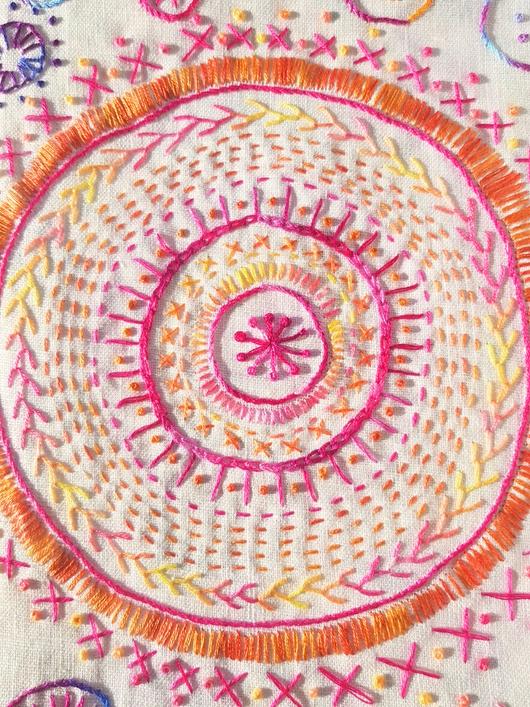



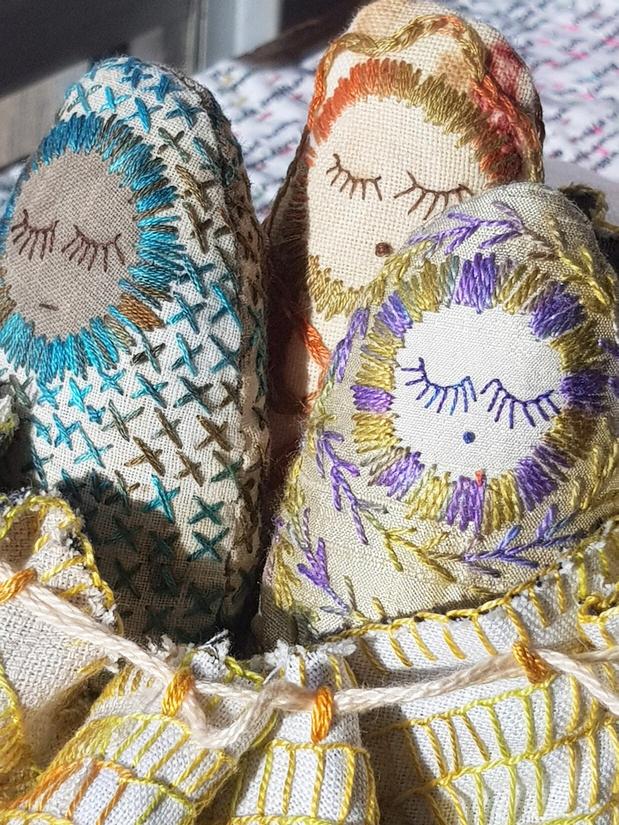
R E P U R P O S I N G D


Tapestry has been at the heart of decorative crafts for centuries Traditionally used to add comfort and personalise interiors, there’s a recent trend where it's repurposed to individualise mass produced fashion
Stitching has been used for thousands of years to make and repair clothes, but embroidery and tapestry has a rich history as a decorative art It’s easy to consider it a frivolous pastime but in fact it has also been used as a tool for activism
In the early 19th century, the Arts and Crafts Movement emerged in protest against the dehumanising effect of the Industrial Revolution where ‘men were being replaced by machines’.
Considered the father of the movement, William Morris founded a business in 1861 that produced high-quality, handmade furniture, textiles, books, and wallpapers. The fabrics and wallpapers are still sold today.
The movement offered a counter culture, allowing people to choose to shrug off the machine-driven age and seek comfort in more natural, crafted interiors.
Compare this to the culture shift that occurred during the COVID-19 pandemic Crafting and DIY boomed because it gave comfort and certainty during a time of unprecedented lockdowns
The pandemic also affected high end fashion, with brands like Oscar de la Renta, Alexis Mabille, JW Anderson and Paco Rabanne exploring tapestry and upholstery in their collections
Like Morris, Gen Z are adopting craft as an act of defiance, not to the Industrial Revolution, but to fast fashion. To them,
upcycling decorative crafts like doilies and tapestry or using embroidery to visibly-mend are not just acts of sustainability.
As embroidery and visible-mending expert Tessa Solomons explains, when you choose to upcycle or repair your clothes, you make a statement.
You're stepping outside consumer culture, and identifying yourself as somebody with a relationship with their clothes and that you're prepared to invest in that ongoing relationship. And it's fun to take something that was mass produced and bring your own personality to that.
Indie fashion labels like Purple Hill and Frankie demonstrate this rejection of fast fashion hyperconsumerism
Purple Hill founder, 21 year old Harry Gamlin says:
“I think people don’t care about it [craftsmanship] anymore, I think that’s what’s fuelled it. People care so much about how things look and wearing it for an Instagram photo or a single night out, that they don’t care if it’s going to last a week I think that’s what craftsmanship is about, it’s not only the details that go into making something, it's about the quality and the way it's made.”
Image: Gary Graham 422


L O W - C O S T T A P E S T R Y S U P P L I E S
All You may think that tapestry wool is only for canvas, but yarn is yarn. Many of The Nest volunteers recommend using it for knitting, crochet or even embroidery. In addition to a rainbow of colourful yarn, we receive donations of printed canvases, blank canvas by the metre, tapestry frames, unfinished and even finished tapestries.

An abundance of inspiration for repurposing tapestries exists online. With a wealth of lowcost supplies available at The Nest, why not try incorporating them into soft furnishings, to repair or decorate jackets, or even make them into fun shopping bags.
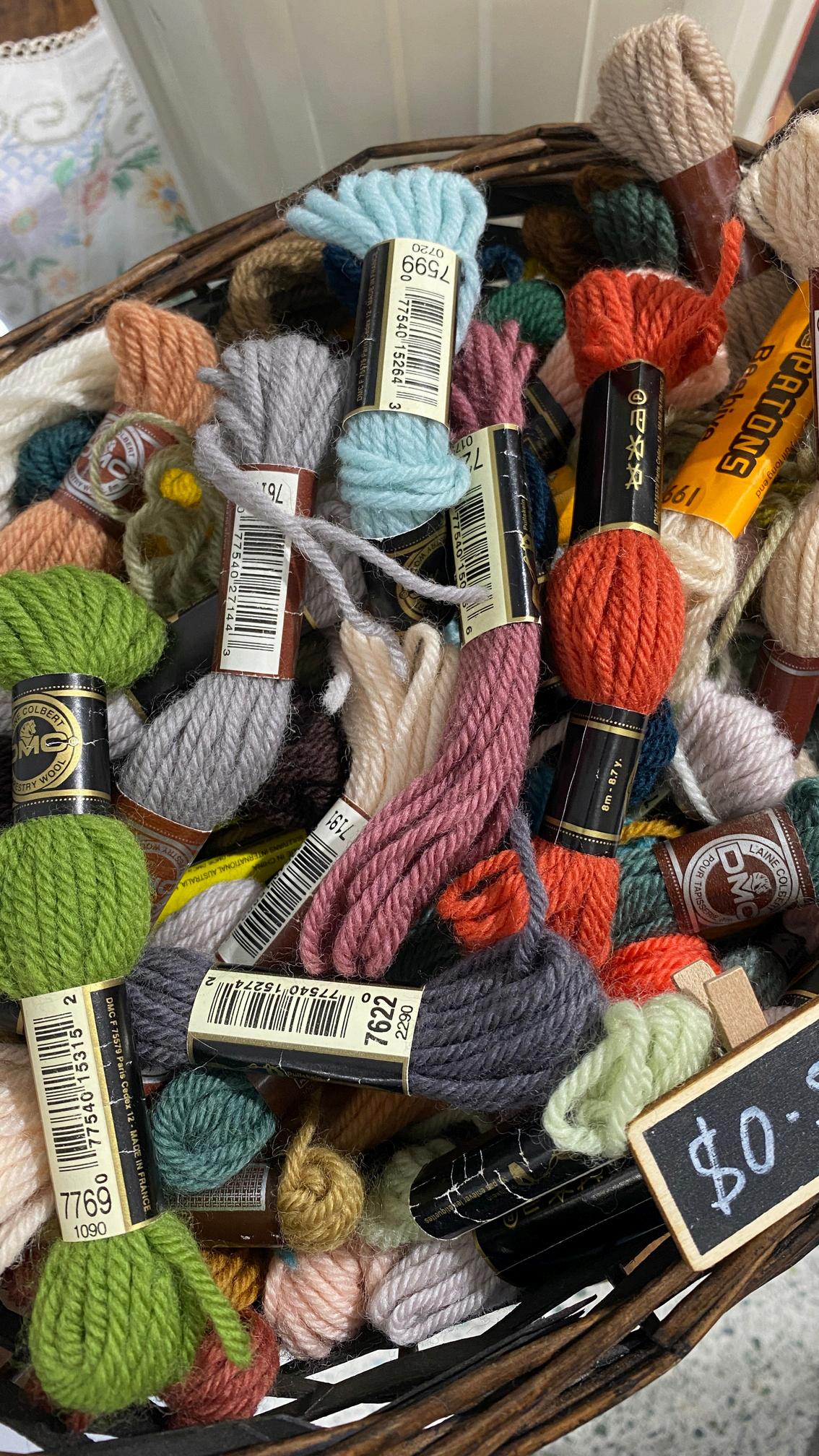











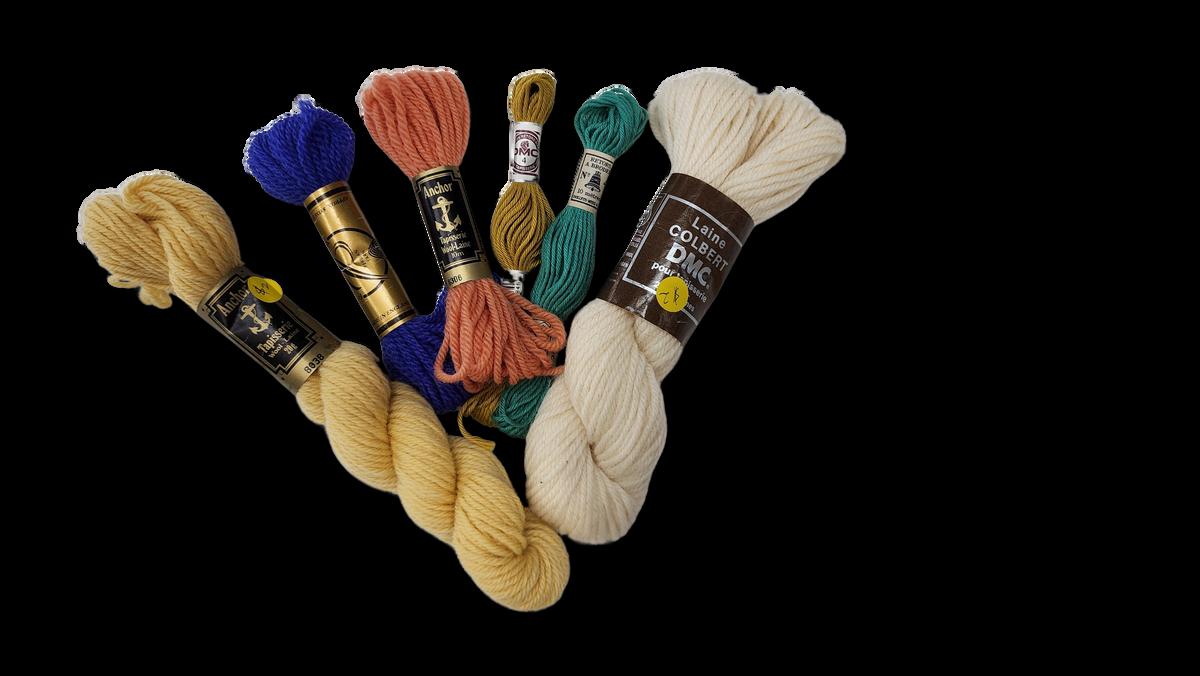

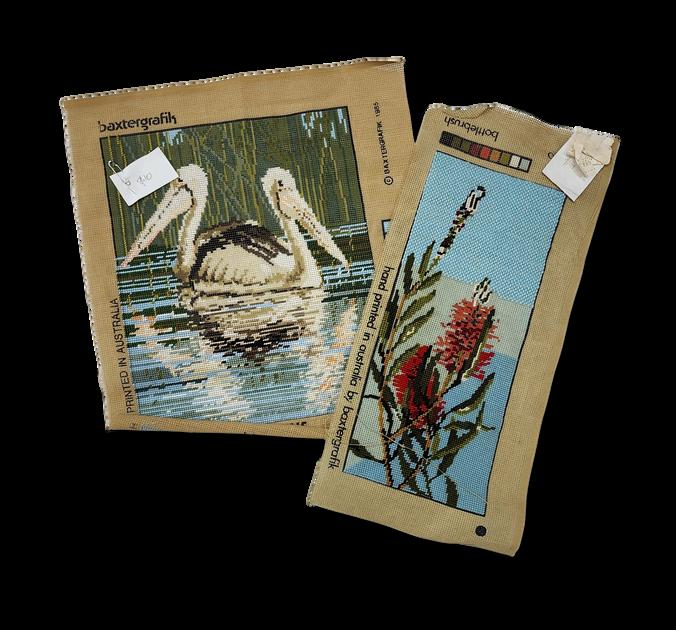






Needing a new dress for a Brisbane Frocktails event, Brita was drawn to Vogue 1782. As it’s a fabrichungry pattern, she headed to The Nest Haberdashery where she found 10 metres of cotton that was perfect for the job
She customised the pattern by shortening the waist and removing the sleeves This meant she also had to draft neck and arm facings
She also added piping to accentuate the shape. She needed 40 metres! The skirt has 15 godets in total, so it was a lot of sewing. The hem alone was eight metres and she added some horse hair braid to make it sit nicely
# N E S T M A D E
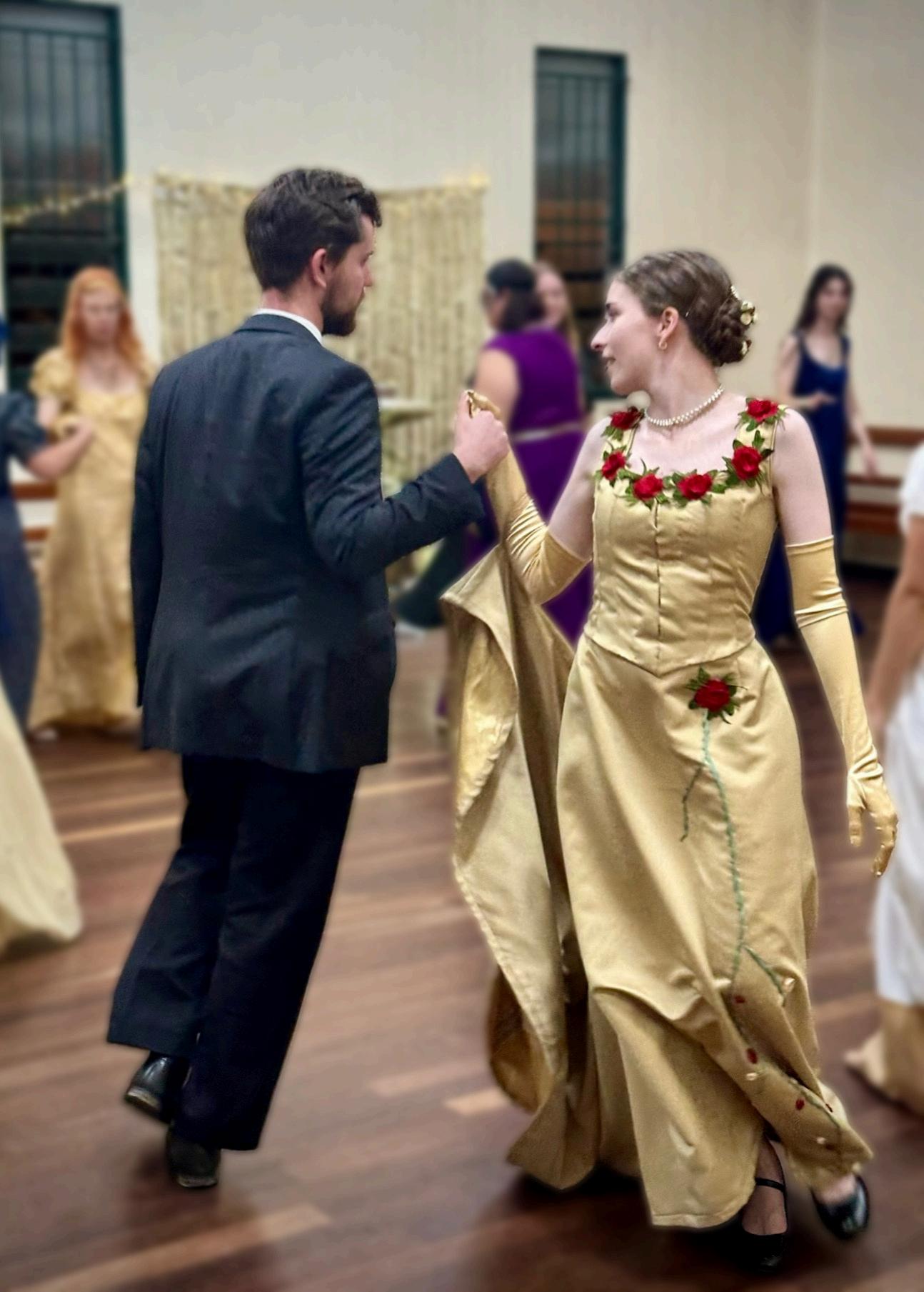
To celebrate her Golden Birthday Ball, Johana used an 1890s pattern to make a golden gown. Inspired by the Belle Epoque era it included a train
Needing around 5 metres of fabric and lining, she headed to The Nest Haberdashery where she also sourced boning, notions and gold trim.
The gown was decorated with silk ribbon embroidery and in a finger wrist loop putting the train u dancing NESTFABRIC $45 # N E S T M A D E
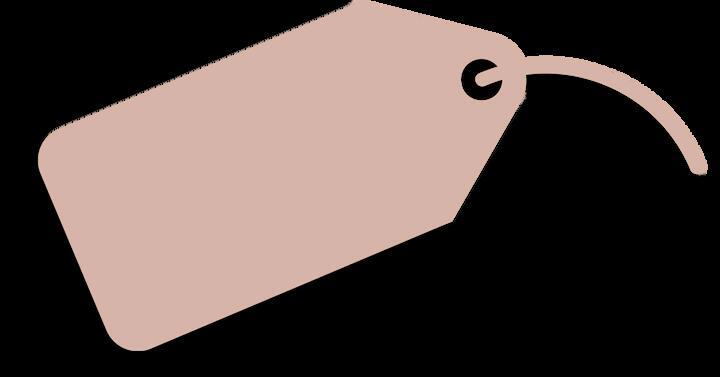
0433 805 987
info@nestcommunity org au
www.nestcommunity.org.au
In sewing, zig zag is used when a straight stitch won’t suffice. It reinforces edges and joins two working pieces together Being able to step sideways and still move ahead is symbolic of how our organisation has evolved. We’ve side stepped challenges but continued to do the things we love.
The zig zag pattern is symbolic of new potential and growth and we’ve always drawn on collective wisdom to create ideas to avoid repeating mistakes, firm in the knowledge that eventually we will be in the right place at the right time to make a positive difference to society
2A/264 South Pine Road
Brendale 4500
